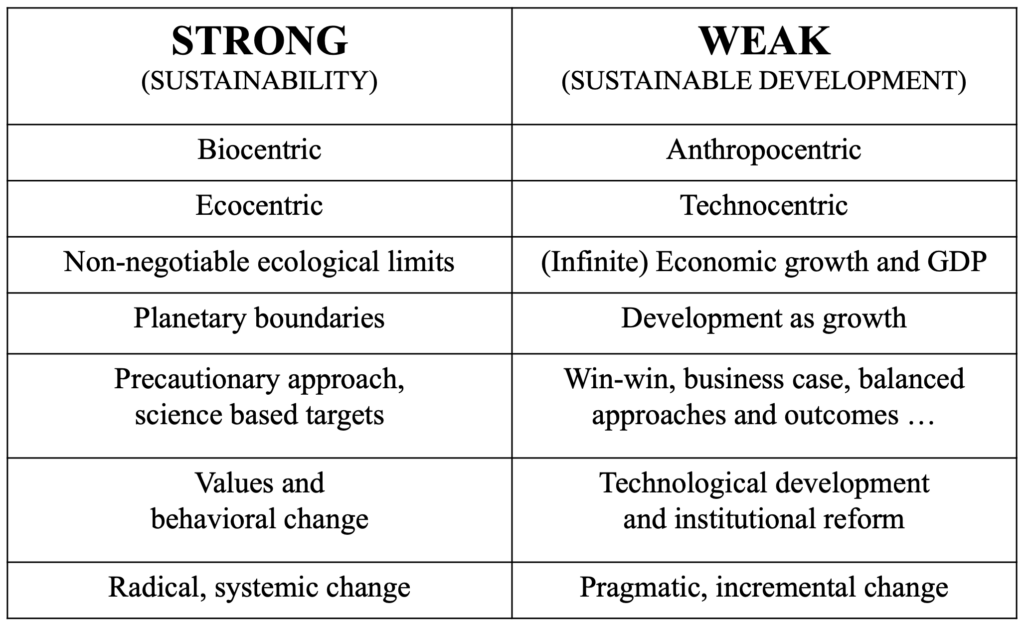By Steen Vallentin
◦ 7 min read ◦
COP26, the 26th UN Climate Change Conference, has just ended. It was supposed to be ‘the next big and significant one’: the great follow-up to COP21 five years ago, the outcome of which was the Paris Climate Agreement, the first binding international treaty on climate change. The global urgency regarding climate issues has certainly never been greater.
Although COP26 has yielded some results and some progress has been made, it has been a disappointment to many, including the iconic and omnipresent Greta Thunberg, who was filmed chanting “you can shove your climate crisis up your a…” along with other demonstrators at a rally in Glasgow – and who summarized the accomplishments of COP26 in three words:
Blah blah blah.
Looking at the Glasgow Climate Pact and its immediate reception, we are certainly, once again, witnessing a political willingness to attribute considerable significance to (non-binding) declarations of intent regarding (possible) future actions and to the mere mentioning of the 1,5°C temperature increase target and efforts to phase-down (not phase-out) the use of coal power and fossil fuel subsidies.
In the absence of truly transformational commitments and progress, the espoused political belief in the power of words to move action can seem quite magical at times, indeed reflective of magical thinking. Certainly, there was nothing magical about the moderate public and civil society expectations of progress preceding COP26. We have to look elsewhere for the magic. We have to look inside the established political system, where magical thinking is at play in definitions of climate problems and solutions, and where it, in itself, constitutes a problem worth addressing.
What is Magical Thinking?
To begin with a definition, magical thinking refers to “the idea that you can influence the outcome of specific events by doing something that has no bearing on the circumstances”. It is a well-known phenomenon in the area of human health and disease. Children are known to practice it.
However, in the area of climate change and sustainability it is the grownups, in particular politicians, that tend to have a proclivity for magic – with the younger generation seeking to expose the deficiency and unrealness of subsequent courses of action.
In relation to sustainability, magical thinking is a matter of believing that certain outcomes – decoupling of economic growth and GHG emissions, a zero carbon economy – can be achieved by means that, although they may have some bearing on circumstances, are insufficient and ultimately unfit for purpose (according to the best available scientific knowledge).
Ends and Means: Strong and Weak Sustainability
One way to frame this problem, at the most general level, is to distinguish between strong and weak sustainability, as illustrated in the table below.

While strong sustainability calls for radical and systemic change guided by a biocentric preoccupation with planetary boundaries, non-negotiable ecological limits and safe operating spaces, weak sustainability signifies a more pragmatic and incremental approach to change, maintaining an anthropocentric focus on development as (economic) growth, human needs and intergenerational equity. An important point being that urgent calls for action tend to draw on the repertoire of arguments provided by strong sustainability, whereas most solutions ultimately fall under the heading of weak sustainability. They are not radical, only incremental, and certainly pragmatic.
The question is whether it is indeed an act of magical thinking to believe that we can accomplish strong sustainability ends by weak sustainability means. In other words, that we can reach the climate targets we need to reach, according to science, by way of incremental, small steps change – holding onto the growth paradigm, the business case and win-win.
The Magic of Win-Win
Andrew A. King and Kenneth P. Pucker, in a recent piece in Stanford Social Innovation Review, speak of “the costs of magical thinking” in relation to the prevalence of the win-win (or triple-win) mindset and associated terms such as CSV (creating shared value). They talk about “strategies [that] rely on improbable mechanisms, promise implausible outcomes, and boast effectiveness that outstrips available evidence.” Strategies that “inflict harm because they distract the business world and society from making the difficult choices needed to address pressing social and environmental issues”.
This begs the question: What is located on the other side of win-win? How can we escape its magical allure and the often exaggerated claims made in its name? Unfortunately, King & Pucker do not have much to say about this. They speak only of how: “It is time to turn away from alluring unproven strategies and refocus our efforts on those interventions that have proven effective – such as government regulation”.
It is not a terribly convincing argument. Government regulation in the age of man-made climate change is not so much an escape from win-win as it is an embodiment of win-win – and arguably needs to be. Sustainable development is not only about climate change and climate solutions – the social and economic pillar of sustainability need to be considered alongside the environmental pillar at all times. That is, questions of social justice and of what is economically feasible also need to be addressed.
The European Green Deal as a Win-Win Scenario
The European Green Deal is, for better or worse, an illustrative example of this. The President of the European Commission, Ursula von der Leyen, has referred to the green transition as ‘Europe’s Man on the Moon Moment’. Nevertheless, the framing of the European Green Deal reads like a textbook case of win-win, and not a very advanced one at that. As you can read on the Green Deal webpage: “Making Europe climate-neutral and protecting our natural habitat will be good for people, planet and economy. No one will be left behind.” The Green Deal is Europe’s new growth strategy, it will help cut emissions while creating new jobs and, again, it will leave no one behind.
Speaking of private businesses, the arguments for going beyond win-win are quite straightforward. There are ethical issues and matters of responsibility that need to be addressed regardless of whether the company can derive any commercial benefit from it. However, in the political realm of multiple and competing interests and policy concerns it is more difficult to escape the clutches of win-win.
Imagine if von der Leyen would have said: “We need to make sacrifices in order for the green transition to happen. We need to slow down growth, it will cost jobs and we cannot guarantee that some people will not be worse off as a result’. It is a virtually unthinkable scenario. Not least because we know that it is the poorest and most vulnerable population groups that are bound to be worse off.
The Magic of Danish Government Policy
That is to say, government as we know it does not represent a solution to the problem of widespread magical thinking about climate change and sustainability. It is very much part of the problem and there is no apparent escape. Not even for the most advanced nations in Europe. Let us take Denmark as an example. Denmark was just ranked 4th in the 2022 Climate Change Performance Index (CCPI). As the three top spots were left empty to signal that not a single country currently deserves a ‘Very high’ rating, Denmark is supposedly the leading country in the world measured on criteria regarding climate policy, renewable energy, energy use and GHG emissions.
This is not to say, however, that Danish climate policy is bereft of magic. Quite the contrary. Dan Jørgensen, the Danish Minister for Climate, Energy and Utilities, has become famous for waving his own kind of somewhat oversized magic wand: ‘the hockey stick’. The hockey stick was originally used (by American climatologist and geophysicist Michael E. Mann) to illustrate temperature changes over time and the transition from the Holocene era (the long shaft) to the Anthropocene era (the short blade). There is nothing magical about this science-based graph.
However, the image of the hockey stick has in recent years been appropriated by management consultants and policy makers who are using it to serve instrumental and sometimes magical purposes. In the instrumentalized imagery, the bend between shaft and blade represents the (magical) moment of innovative/technological discovery, an inflection point allowing, ideally, for a transition from a period of inferior – ineffective, unsustainable – solutions (the shaft) to a period of superior solutions (the blade).
Dan Jørgensen has been widely criticized for his espoused belief in a long shaft (gestation) period, that tends to become longer and longer and is so far marked by a lack of truly groundbreaking results and postponement of difficult decisions (particulary regarding implementation of a CO2 tax). On the one hand, the inflection point is continually moved further and further away. On the other, it is assumed that the magical moment of discovery and transformative change will happen in time for Denmark to be able to deliver on the Paris Climate Agreement and the even more ambitious Danish climate law.
A concrete example of magic at work in Danish climate policy is the below image from the recent government action plan on green transition. Notice in particular the small miracle that is supposed to happen from 2029-2030, where all the technical reduction potentials on display somehow reach their target of zero. It seems magical. It is certainly not well explained in the action plan how this can come about – or why the reader should find this sort of technical forecast even remotely believable.

The Great Balancing Act: Magic and Reality
There is an upside and a downside to magical thinking and political talk and action that can be said to reflect magical thinking. Today’s magical ideas may turn out to be next year’s (or the next decade’s etc.) realistic solutions or courses of action. Magical thinking blends into notions of aspirational talk and aspirational policymaking, suggesting that lofty goals can help inspire, motivate and accelerate change processes.
However, the downside is if magical belief in win-win solutions becomes a sort of self-imposed constraint or censorship standing in the way of open and honest discussions about the changes and sacrifices needed to make the green transition happen.
This can exacerbate accusations of greenwashing and create more public cynicism regarding climate policy and the willingness and ability of the political system to act proportionately. Magical ambitions needs to connect with harsh realities.
Further Reading
King, A.A. & Pucker, K.P. (2021). The Dangerous Allure of Win-Win Strategies. Stanford Social Innovation Review, Winter. Online first.
Sjåfjell, B. (2018). Redefining the Corporation for a Sustainable New Economy. Journal of Law and Society, 45(1), 29-45.
About the Author
Steen Vallentin is Academic Director of the CBS Sustainability Centre and Associate Professor in the Department of Management, Society and Communication at Copenhagen Business School. His research is centered on CSR as a social and political phenomenon in the broadest sense, increasingly with a focus on corporate sustainability, circular economy and business model transformation – along with the politics and aspirational aspects of sustainable development more broadly.
Heading photo by Kristopher Roller on Unsplash.
